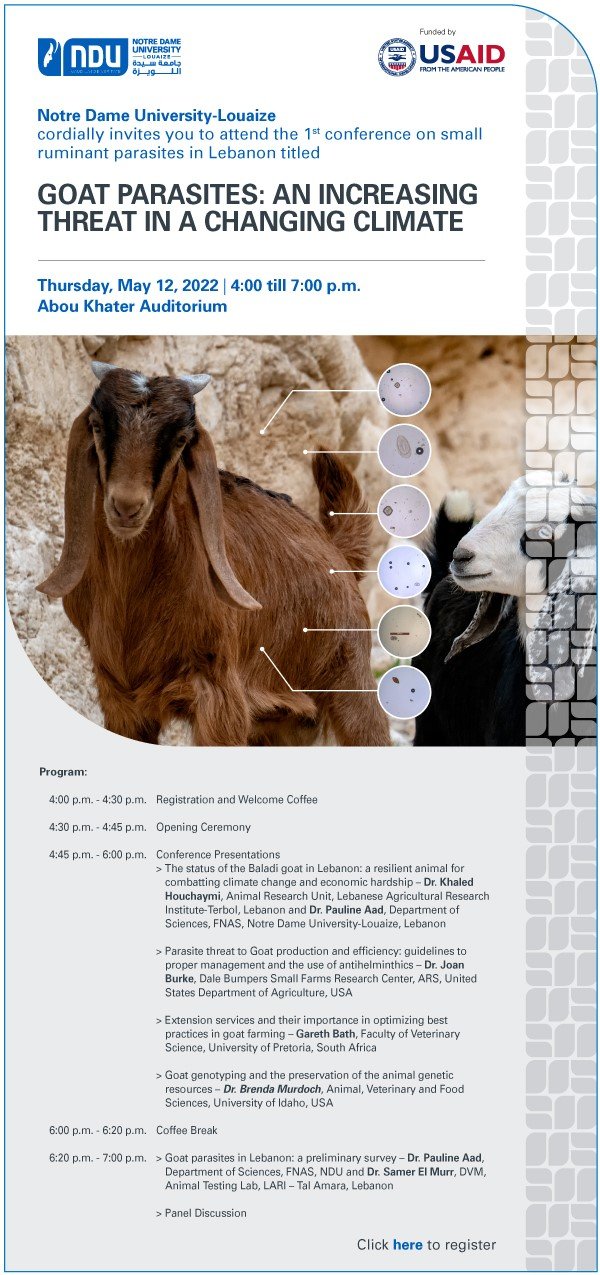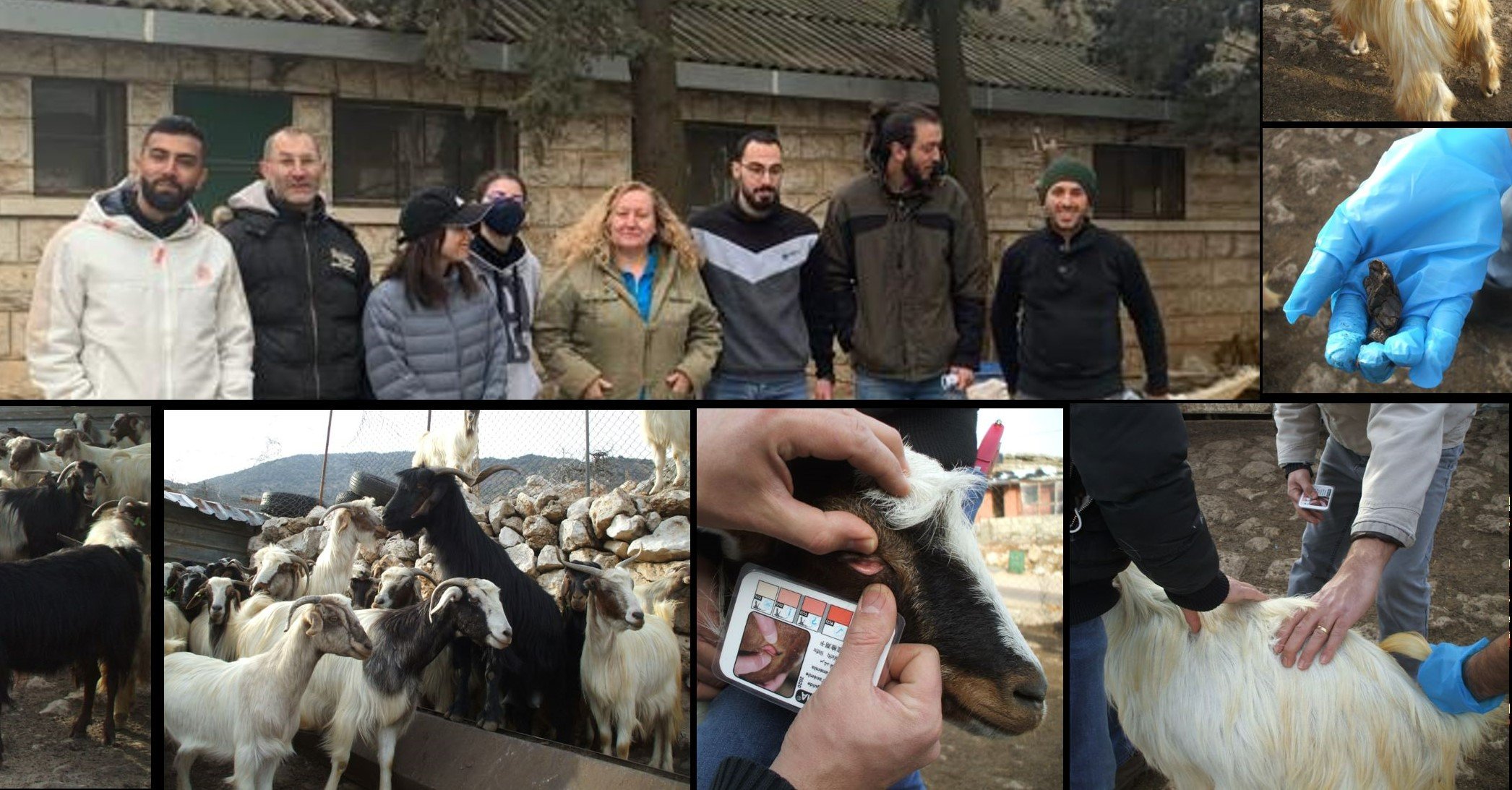The Baladi goat, an alpine-type, highly resilient animal, is managed in a pastoral transhumant system in Lebanon, traveling long distances in cold, wet winters or hot, dry summers. Some rangelands could harbor pathological parasites that infect goats, while other rangeland environments may have plants with secondary compounds that mitigate parasite infection. However, these plants could have detrimental effects on the animal, reducing feed intake, inducing nutritional deficiencies, and triggering neurologic effects.
The Lebanese rangeland needs to be further assessed for the presence of such compounds and their impacts on the grazing patterns of the Baladi goat. Therefore, this PEER project sought to analyze the resilience of Baladi goats to environmental changes, food stress, and challenges. The overarching research goal was to determine the best management strategies for optimal milk production, natural treatment of parasites, and improved reproductive efficiency, as well as possible markers for selection of resilient goats in the transhumant system. The project team also established extension services in collaboration with their local governmental collaborator, the Lebanese Agricultural Research Institute (LARI), as well as local transhumant communities and the private agro-farming sector. Farmers were able to observe firsthand the impact and level of parasite infestation, as well as receive brucellosis testing for their livestock, a service that was instrumental in breeding planning.
Final Summary of Project ActivitiesThe researchers studied the prevalence of helminth parasites in 90 Baladi goats raised under three different management systems: intensive/managed, extensive/pastoral, and semi-intensive/agro-pastoral. During two summer periods of heat stress, the researchers recorded various data points for each system, including an assessment of fat and muscle levels, anemic state, nostril discharge, stool character, and bottle jaw edema. The PEER team also collected fecal samples to analyze for fecal nematode eggs and protozoan oocyte count.
The results showed that the goats’ body condition was not altered between heat stress periods, but decreased in intensively managed flocks due to the lack of availability of high quality feed. Anemic state did not differ. All fecal samples tested showed HOTC (Haemonchus, Ostertagia, Trichostrongylus, and Cooporia complex) egg-type nematodes, while 98% showed Eimeria spp. with the occasional occurrence of Skrjabinema nematodes and Moniezia tapeworms. The parasitic burden of HOTC was low at 17 % of total FEC, while high for Eimeria at 98% for all management systems.
Though the effect of summer heat stress was not obvious on endoparasite prevalence in Lebanese Baladi goats, the confounding effects of resilience to gastrointestinal nematodes, nutritional stress, and heat stress in these locally resilient goats require further investigation.
In the following year, the researchers screened for these parasites year-round in the same flocks, as well as for parasite prevalence across various Lebanese regions, including Bekaa, North Lebanon, Akkar, Mount-Lebanon, and Kesrouan. They sampled blood from 300 goats to genotype for parasite resilience. The findings showed low to medium prevalence and a high genotype variability in Lebanese Baladi goats. The team also undertook fat analysis of goat milk, which showed effects from lactation and management-style on fatty acids. Further investigation is required to select one or two important traits to be adopted by farmers for genetic improvement.
The PEER team held an event on the increasing threat presented by goat parasites in a changing climate in May 2022 and hosted a genomic analysis workshop in July 2023 attended by 15 participants. The PI also attended a LibanVet-organized conference on the utility of genomic data in large dairy farms and presented briefly on the PEER project.
As for capacity building, the project team also trained many graduate students from the various agricultural schools in Lebanon who are now working as extension specialists, supporting farmers in their development. The researchers also received four additional grants worth $41,000 total for related and other work and built a technical guide for farmers and for technicians on parasite analysis in both Arabic and English.
PublicationsL.F. Schütz, A.M. Hemple, B.C. Morrell, N.B. Schreiber, J.N. Gilliam, C. Cortinovis, M.L. Totty, F. Caloni, P.Y. Aad, and L.J. Spicer. 2022. Changes in fibroblast growth factor receptors-1c, -2c, -3c, and -4 mRNA in granulosa and theca cells during ovarian follicular growth in dairy cattle.
Domestic Animal Endocrinology 80: 106712.
https://doi.org/10.1016/j.domaniend.2022.106712L.J. Spicer, L.F. Schütz, and P.Y. Aad. 2021. Effects of bone morphogenetic protein 4, gremlin, and connective tissue growth factor on estradiol and progesterone production by bovine granulosa cells.
Journal of Animal Science 99 (11): skab 318.
https://doi.org/10.1093/jas/skab318 




